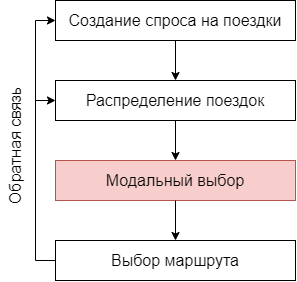Development of an integrated transport planning model
About the project
The aim of the project is to develop a comprehensive transport planning model by modifying existing models of transport networks and individual balances in them, taking into account the various modes of transport and technologies used, as well as the concepts of their use.
The peculiarities of the model being developed will be that it will take into account combinations of modes of transport, various technologies that can be used on it (unmanned vehicles, connected vehicles, etc.), and concepts for their use (sharing schemes, MaaS (Mobility as a Service) , automatic transport control systems). The model should also take into account the parameters of the transport network in which vehicles move.
Why do you need that project:
The process of urban and transport planning must address the issues of safety, accessibility, environmental friendliness and resource savings provided by the transport system.
There are many approaches to transport and urban planning. The two main ones are conservative (a return to what worked before) and progressive (attempts to find a solution to improve the system through the use of new technologies). Between these areas there are constant disputes about which direction it is necessary to move in the development of transport systems to solve the above problems.
To resolve these disputes, this project proposes to create a software package for transport planning.
Сustomer:
The project was created on the initiative of a student, the customer of the project is MIEM.
Project execution plan:
To complete the assignment, it is necessary to carry out analytical work prior to development, which will consist of studying and creating a database of the modes of transport used, technologies and concepts for their use. Also, it is necessary to determine what the accuracy of the models used should be, where boundaries should be defined to take into account the effects on the modeled system in order to ensure appropriate accuracy.
Models must be studied and selected from those available on the Internet (implemented in high-level programming languages, such as C++/Python/Java/MATLAB, etc.). After that, it is necessary to modify / refine the model so as to add the ability to conduct simulations taking into account various vehicles, technologies and concepts for their use.
At the end of the project, it will be necessary to simulate the modal choice and individual balance for new options for transport-technologies-concepts, compare the simulation results with previously obtained data, and prove the correctness of the software model.
The models obtained as a result of work on the project are supposed to be used for transport planning, taking into account the emergence of new technologies and concepts for their use. In the future, it is planned to continue the project and add the ability to take into account and change other parameters in the models.
What stage is the project at?
A large database of information sources on the topic of the project has been studied and formed. The theoretical basis for the work has been laid - databases of modes of transport, technologies and concepts of use have been created. For example, the transport usage concepts are categorized as follows:
- Passenger transport
- Personal transport
- Transport within the concept of Smart Mobility
- Public transport
- Public transport for certain groups of passengers (military, schoolchildren, workers, etc.)
- Transport sharing schemes
- Car sharing
- Free-floating
- Peer-to-peer
- Fractional
- Roundtrip
- One-way
- Ridesharing (carpooling)
- Classical
- Dynamic
- Regular
- Hitch-hiking
- Taxi
- Demand-responsive transport (DRT)/Mobility on Demand (MOD)
- Ridesplitting
- Email Services
- Microtransit
- Shared Automated Vehicles
- Car sharing
- Mobility as a Service (MaaS)
- Automated transport systems
The basis for the development of the model and its testing has been prepared.
The basis of the program for the implementation of the four-stage model of transport planning has been developed.

Instead of going to the fourth step, the developed program calculates the probability of choosing a certain type (mode) of transport. At the moment, the program describes the choice between personal and public transport.
The project team:

Project leaders
Associate Professor
Have you spotted a typo?
Highlight it, click Ctrl+Enter and send us a message. Thank you for your help!
To be used only for spelling or punctuation mistakes.
